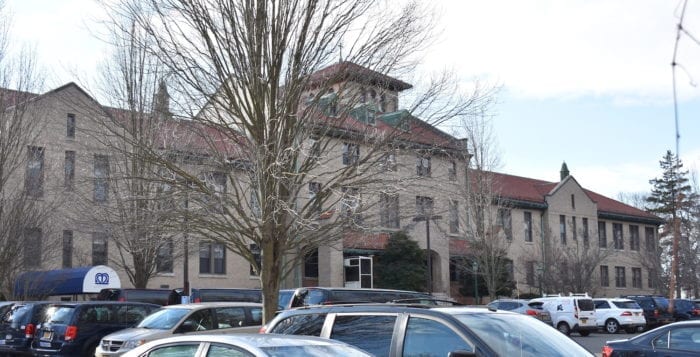A Port Jefferson school for children and young adults with developmental disabilities announced it would be shutting down gradually over the next two years.
The Maryhaven Center of Hope, whose entrance is located along Myrtle Avenue in Port Jefferson, announced it will shut down the school over time, regularly moving the children, aged 5 through 21, along with faculty to different Maryhaven facilities on Long Island.

“We have to stay open, and we want to stay open until every student is placed,” said Chris Hendriks, a Catholic Health Services of Long Island spokeswoman. “This population requires one-to-one care.”
Representatives from Catholic Health Services, which runs Maryhaven, said it would begin winding down the residential school program at the end of the 2018-19 school year. It’s 71 students will need to be placed in other programs.
“It is a very difficult decision to close this important program that we have been running for more than 50 years, and we are heartbroken that we must do that,” said Maryhaven President and CEO Lewis Grossman in a press release. “But this action is the only fiscally responsible option to secure a strong and vital future for Maryhaven’s many other needed programs.”
In a letter posted to the Maryhaven website, Grossman added he anticipates the program would be active throughout the 2019-20 school year.
Maryhaven, which aids over 1,500 children and young adults in total, has experienced a significant operating loss at the Port Jeff from 2018 at approximately $1.7 million, according to the press release. The facility off Myrtle Avenue is also aging at an unsustainable rate, Hendriks said. The school said it would cost more than $10 million to renovate the building, which was originally constructed in the 1930s. The spokeswoman added the reimbursement rates New York State supplies to the organization has declined in recent years.
“The state’s rates that give us the money for caring for these children has not kept up with the pace of cost of living.” the spokeswoman said. “For example, as of this week we got the rates for 2016, so we’re paying well in advance and then have to wait to be reimbursed back.”
Several Maryhaven students will be older than 21 after June, Hendriks said. The letter by the Maryhaven CEO said those age 21 or older will be eligible for adult placement through the New York State Office for People with Developmental Disabilities, and some will be able to transfer to other adult programs within Maryhaven.
Hendriks said Catholic Health Services is offering monetary incentives for the near 200 workers at the facility to stay on with the health care service provider until the end. Those who stay on will be moved to other Maryhaven or other service centers within the orbit of CHSLI.
For the students, Hendriks said where they attend after the Port Jeff facility is closed will be up to their respective school districts.
“This population requires one-to-one care.”
— Chris Hendricks
“The way it works is if, for example, the [Smithtown] school district can’t care for a child because they often have behavioral social, medical or behavioral issues, the school districts send them to our facilities and we take care of them,” she said. “Now, in this case it’s up to the school district to find a new location for them with the help of the state, and there are other locations to go to.”
Parents of children in the Maryhaven programs were brought in for a special meeting March 12 to discuss their options.
Many people who knew of the facility voiced their disappointment of the news on social media. Now a Change.org petition called Save Maryhaven’s Children Services!! has reached more than 8,500 people in support. The petition calls for U.S. Rep. Lee Zeldin (R-Shirley) or Gov. Andrew Cuomo (D), along with other state and federal representatives, to step in and give support to the ailing facility. Some signing the petition said they had children who attend the facility, others claimed they had worked with Maryhaven and were devastated to see it go.
“I’ve worked here for 10 years, and the dedication of staff is priceless,” said Jennifer Moore, of Brentwood, on the petition. “Everyone is like second family, we care so much for our clients. I am devastated for my fellow employees but even more so for the kids.”
Maryfran Fantigrossi, who has worked with the school for 30 years, said she has seen the good work the school does for its students.
“Special needs children need and deserve a residential school that will help [them] in all facets of their lives to be the best person they can,” Fantigrossi said on the petition. “Maryhaven has done that for years.”















